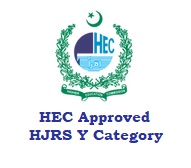The risk factors analysis of diabetes mellitus and hypertension in the population of district Swabi, Khyber Pakhtunkhwa, Pakistan
DOI:
https://doi.org/10.47264/idea.nasij/4.1.4Keywords:
non-contagious disease, epidemic disease, abnormal blood glucose, hypertension, hyperglycaemia, spectrophotometer, anxiety, glucose, plasma, insulin, secretionAbstract
Diabetes is the major non-contagious, long-lasting epidemic disease caused by abnormal blood glucose levels resulting from the disablement in insulin action and secretion. The objective of the study is to estimate diabetes mellitus and risk factors of diabetes mellitus in the population of district Swabi, Khyber Pakhtunkhwa, Pakistan. A total of 150 blood samples are collected from March-July 2021. All diabetic patients are screened randomly using a spectrophotometer (Micro Lab 300). At the same time, data regarding subjective information, socioeconomic status, and behavioural risk factors are collected by personal interviews, which are further statistically analysed. Results show that the frequency distribution of diabetes is n= 107 (71.3%) while n= 43 (28.7%) of the total n=150 are normal. Mean±sd of the data is 1.29±0.45. There is a significant association between diabetes mellitus and hypertension (n= 95, 63%, Cl 95%, and P-value 0.041). Hyperglycaemia is n= 109 (72.7% and P-value 0.00), and anxiety/depression is n= 95 (63% and P-value 0.004). Gender, age, education, and smoking (p-value > 0.05) are non-significant risk factors for diabetes. The findings show a significant association among diabetes mellitus, hypertension, hyperglycaemia, and depression.
References
Aamir, A. H., Ul-Haq, Z., Mahar, S. A., Qureshi, F., Ahmad, I., Jawa, A., Sheikh, A., Raza, A., Fazid, S., Jadoon, Z., Ishtiaq, O., Safdar, N., Afridi, H., & Heald, A. H. (2019). Diabetes Prevalence Survey of Pakistan (DPS-PAK): prevalence of type 2 diabetes mellitus and prediabetes using HbA1c: a population-based survey from Pakistan. BMJ Open, 9(2), e025300. https://doi.org/10.1136/bmjopen-2018-025300
Abbott, C. A., Carrington, A., Ashe, H. L., Bath, S. C., Every, L. C., Griffiths, J., Hann, A. W., Hussein, A., Jackson, N. J., Johnson, K. F., Ryder, C., Torkington, R., Van Ross, E. R. E., Whalley, A. M., Widdows, P., Williamson, S., & Boulton, A. J. (2002). The North-West Diabetes foot care study: incidence of, and risk factors for, new diabetic foot ulceration in a community-based patient cohort. Diabetic Medicine, 19(5), 377-384. https://doi.org/10.1046/j.1464-5491.2002.00698.
Akhtar, T., Hussain, I., Ahmad, I., & Nazli, R. (2011). Prevalence of Diabetes Mellitus in rural adults of district Peshawar. Pakistan Journal of Medical Research, 50(3), 115-119. https://inis.iaea.org/search/searchsinglerecord.aspx?recordsFor=SingleRecord&RN=43014058
Al-Hakami, A. M. (2016). Pattern of thyroid, celiac, and anti-cyclic citrullinated peptide autoantibodies coexistence with type 1 diabetes mellitus in patients from Southwestern Saudi Arabia. Saudi Medical Journal, 37(4), 386-391. https://doi.org/10.15537/smj.2016.4.13571
Ali, M., Wahab, M., Ahmad, L., Ahmad, I., Semotiuk, A. J., & Jan, H. A. (2022). Ethnopharmacological evaluation of medicinal plants used to treat diabetes mellitus in Maidan valley, Dir Lower, Pakistan. Natural and Applied Sciences International Journal (NASIJ), 3(1), 45–60. https://doi.org/10.47264/idea.nasij/3.1.4
American Diabetes Association. (2014). Standards of medical care in diabetes - 2014. Diabetes Care, 37(Supplement-1), S14-S80. https://doi.org/10.2337/dc14-S014
Basit, A., Fawwad, A., Qureshi, H., Shera, A. S., & Members, N. (2018). Prevalence of diabetes, pre-diabetes and associated risk factors: second National Diabetes Survey of Pakistan (NDSP), 2016–2017. BMJ Open, 8(8), e020961. https://doi.org/10.1136/bmjopen-2017-020961
Beckman, J. A., & Creager, M. A. (2016). Vascular complications of diabetes. Circulation Research, 118(11), 1771-1785. https://doi.org/10.1161/circresaha.115.306884
Brancati, F. L., Whelton, P. K., Kuller, L. H., & Klag, M. J. (1996). Diabetes mellitus, race, and socioeconomic status a population-based study. Annals of Epidemiology, 6(1), 67-73. https://doi.org/10.1016/1047-2797(95)00095-x
Fatima, H., Bibi, A., Ashraf, A., Shaheen, N., Laiba, & Ali, F. (2022). Occurrence and distribution of diabetes mellitus in Mardan, KPK Pakistan. Pakistan Biomedical Journal 5(5), 113-117. https://doi.org/10.54393/pbmj.v5i5.313
Haque, N., Debnath, B. C., Ibrahim, M., Sirajuddin, K., Majumder, M., & Hossain M. S. (2011). Association of HbA1c with urinary ACR & eGFR in Type-2 diabetes mellitus. Pulse 5(1), 6-11. https://www.semanticscholar.org/paper/Association-of-HbA-1-c-with-Urinary-ACR-%26-eGFR-in-Haque-Debnath/a52a7e83662f00d9bf01e21ff2b2be3f94d089c1
Iglay, K., Hannachi, H., Howie, P. J., Xu, J., Li, X., Engel, S. S., Moore, L. L., & Rajpathak, S. (2016). Prevalence and co-prevalence of comorbidities among patients with type 2 diabetes mellitus. Current Medical Research and Opinion, 32(7), 1243-1252. https://doi.org/10.1185/03007995.2016.1168291
Mather, H. M., & Keen, H. (1985). The Southall Diabetes Survey: prevalence of known diabetes in Asians and Europeans. BMJ, 291(6502), 1081-1084. https://doi.org/10.1136/bmj.291.6502.1081
Qiu, L., Wang, W. H., Sa, R., & Liu, F. (2021). Prevalence and Risk Factors of Hypertension, Diabetes, and Dyslipidemia among Adults in Northwest China. International Journal of Hypertension, 2021, 5528007. https://doi.org/10.1155/2021/5528007
Rahati, S., Shahraki, M., Arjomand, G., & Shahraki, T. (2014). Food pattern, lifestyle and diabetes mellitus. International Journal of High Risk Behaviors and Addiction, 3(1). https://doi.org/10.5812/ijhrba.8725
Robbins, J. B., Vaccarino, V., Zhang, H., & Kasl, S. V. (2005). Socioeconomic status and diagnosed diabetes incidence. Diabetes Research and Clinical Practice, 68(3), 230-236. https://doi.org/10.1016/j.diabres.2004.09.007
Said, U., Hidayat Khan, M. O., Adeel, M., & Muhammad. (2019). A Frequency of hyperglycemia and its associated risk factors in diabetic patients. International Journal of Biosciences (IJB), 15(6), 230-234. https://doi.org/10.12692/ijb
Shera, A. S., Jawad, F., & Maqsood, A. (2007). Prevalence of diabetes in Pakistan. Diabetes Research and Clinical Practice, 76(2), 219-222. https://doi.org/10.1016/j.diabres.2006.08.011
Smith, S. M., Soubhi, H., Fortin, M., Hudon, C., & O’Dowd, T. (2012). Managing patients with multimorbidity: systematic review of interventions in primary care and community settings. BMJ, 345(1), e5205. https://doi.org/10.1136/bmj.e5205
Staessen, J. A., Kuznetsova, T., & Stolarz, K. (2003). Hypertension prevalence and stroke mortality across populations. JAMA, 289(18), 2420-2422. https://doi.org/10.1001/jama.289.18.2420
Sonne, D. P., & Hemmingsen, B. (2017). Comment on American Diabetes Association. Standards of Medical Care in Diabetes—2017. Diabetes Care 2017, 40(Supp. l), S1–S135. Diabetes Care, 40(7), e92–e93. https://doi.org/10.2337/dc17-0299
Yang, W., Lu, J., Weng, J., Jia, W., Ji, L., Xiao, J., Shan, Z., Liu, J., Tian, H., Ji, Q., Zhu, D., Ge, J., Lin, L., Chen, L., Guo, X., Zhao, Z., Li, Q., Zhou, Z., Shan, G., & He, J. (2010). Prevalence of Diabetes among Men and Women in China. The New England Journal of Medicine, 362(12), 1090–1101. https://doi.org/10.1056/nejmoa0908292
Zuhaid, M., Zahir, K. K., & Diju, I. U. (2012). Knowledge and perceptions of diabetes in urban and semi urban population of Peshawar, Pakistan. Journal of Ayub Medical College Abbottabad, 24(1), 105-108. http://www.demo.ayubmed.edu.pk/index.php/jamc/article/view/2166
Downloads
Published
Issue
Section
License
Copyright (c) 2023 Sehrish Jan, Mehreen Riaz, Abdul Wahab, Ahad Hussain

This work is licensed under a Creative Commons Attribution-NonCommercial 4.0 International License.
Please click here for details about the Licensing and Copyright policies of NASIJ.








